How to Effectively Fertilize Eucalyptus Trees for Robust Growth
- February 21, 2024
- 2 comment
Unlock the full potential of your eucalyptus trees with this expert guide on fertilization! Eucalyptus trees are prized for their rapid growth, robust timber, and environmental benefits, but they thrive best when given proper care, especially when it comes to their nutritional needs.
To achieve healthy, towering trees, fertilization plays a crucial role. A well-fed eucalyptus tree grows faster, resists pests and diseases better, and adapts more effectively to environmental stress. This guide focuses on practical, straightforward tips to ensure your eucalyptus trees receive the nutrients they need for optimal growth.
Whether you’re looking for the best fertilizer for eucalyptus trees, advice on the ideal eucalyptus fertilization schedule, or organic fertilizer options, this guide has you covered. Let’s dive into proven strategies to boost eucalyptus growth and ensure your trees thrive in any environment.
List of Guides on How to Fertilize Eucalyptus Trees
- Understand Your Tree’s Needs
- Conduct a Soil Test
- Choose the Right Fertilizer
- Determine the Best Time to Fertilize
- Prepare the Fertilizer
- Apply the Fertilizer
- Monitor and Adjust
Understanding Eucalyptus Nutritional Needs
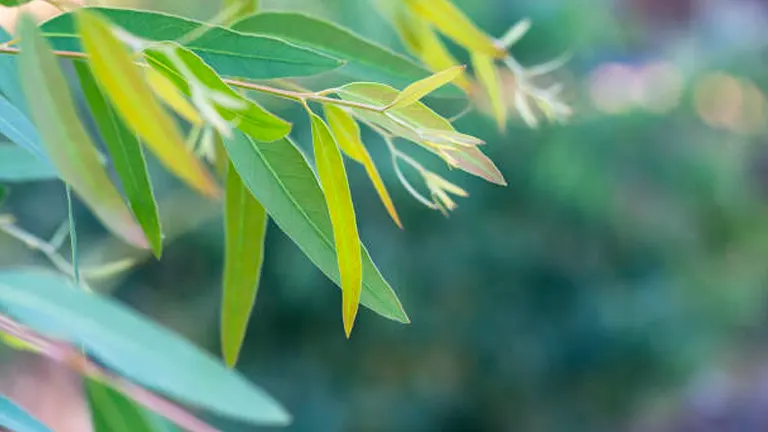
Eucalyptus trees, renowned for their rapid growth and versatility, have specific nutritional requirements that are pivotal for their health and productivity. Achieving optimal growth involves a nuanced understanding of these requirements, including both macro and micronutrients.
Essential Nutrients and NPK Ratios
The growth and health of eucalyptus trees are significantly influenced by the availability of nitrogen (N), phosphorus (P), and potassium (K). These nutrients serve distinct functions:
- Nitrogen (N): Vital for vegetative growth, nitrogen is a key component of chlorophyll and amino acids, the building blocks of proteins. It’s most crucial during the initial growth phase.
- Phosphorus (P): Essential for root development, energy transfer, and photosynthesis, phosphorus supports the growth of the tree from its early stages through maturity.
- Potassium (K): Plays a critical role in water regulation, disease resistance, and supporting the processes of photosynthesis and enzyme activation.
The optimal NPK ratio for eucalyptus trees varies through their lifecycle. In the seedling stage, a ratio emphasizing nitrogen (such as 20-10-10) supports leaf development. As trees mature, a balanced ratio (such as 10-10-10) is often recommended to support overall tree health and productivity.
NPK Ratios and Eucalyptus Growth
| Growth Stage | Recommended NPK Ratio | Purpose |
|---|---|---|
| Seedling | 20-10-10 | Supports rapid leaf and stem growth |
| Young Trees | 15-15-15 | Encourages balanced growth of leaves, roots, and stems |
| Mature Trees | 10-10-10 | Maintains health and supports reproductive development |
Micronutrients for Added Vigor
In addition to the primary nutrients, eucalyptus trees require micronutrients in smaller quantities for optimal growth:
- Zinc (Zn): Crucial for protein synthesis and growth regulation.
- Magnesium (Mg): A central component of chlorophyll, essential for photosynthesis.
- Iron (Fe): Necessary for chlorophyll synthesis and function.
These micronutrients, though needed in minor amounts, play significant roles in the physiological processes of eucalyptus trees, impacting their growth and resilience.
Soil Type and Nutrient Availability
The availability of these essential nutrients is heavily dependent on soil type. Sandy soils, characterized by their coarse texture and low water retention capacity, often lead to rapid leaching of nutrients. In contrast, clay and loam soils, with their finer texture and higher organic matter content, tend to retain nutrients more effectively.
Scientific Analysis of Soil Impact on Nutrient Dynamics
| Soil Type | Characteristics | Impact on Nutrient Availability |
|---|---|---|
| Sandy | High drainage, low organic matter | Nutrients leach quickly; more frequent fertilization needed |
| Clay | Low drainage, high nutrient retention | Nutrients available longer; risk of waterlogging |
| Loam | Balanced drainage and retention | Ideal for nutrient availability and root growth |
Conducting Soil Tests
Soil testing is an essential practice for determining the current nutrient status and pH level of the soil, allowing for precise adjustments to fertilization strategies. For eucalyptus trees, aiming for a soil pH between 5.5 and 6.5 is generally optimal for nutrient uptake.
Fertilization Guidelines
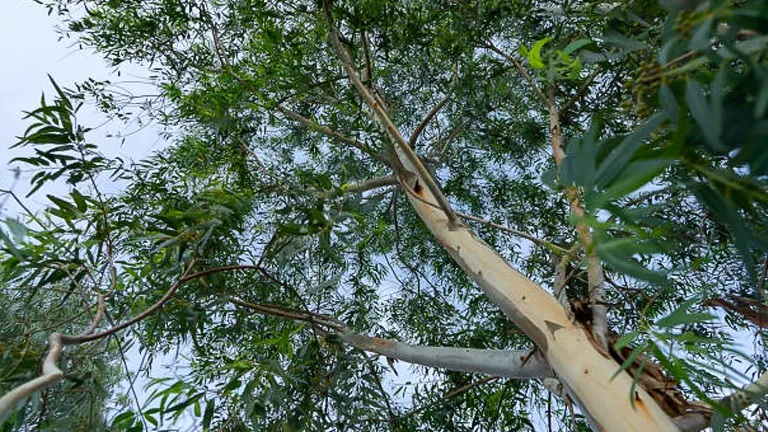
Fertilizing eucalyptus trees effectively requires a blend of scientific knowledge, practical experience, and attentiveness to the trees’ specific needs. This section delves deeper into the best practices for fertilizing eucalyptus trees, emphasizing the importance of timing, environmental considerations, and the precise application of nutrients.
Determining the Best Time to Fertilize:
- Growth Phase Alignment: Eucalyptus trees’ nutrient requirements fluctuate throughout their growth cycle. The critical periods for fertilization are early spring, as new growth begins, and again in summer, to support sustained growth and development.
- Environmental Considerations: Local climate conditions play a significant role in determining the optimal fertilization schedule. In regions with distinct wet and dry seasons, it’s advantageous to fertilize just before the onset of the rainy season to maximize nutrient absorption and minimize leaching.
Enhancing Nutrient Uptake
- Daylight and Temperature: Research has shown that the combination of increasing daylight hours and warmer temperatures in late winter to mid-summer triggers significant metabolic activity in eucalyptus trees, making this period ideal for nutrient uptake.
- Soil Temperature: Soil temperature also affects nutrient availability and root absorption rates. Ideally, soil temperatures should be above 15°C (59°F) to optimize nutrient uptake. Applying fertilizers when soil temperatures are in this range ensures that nutrients are more readily available to the tree’s root system.
Advanced Strategies for Fertilization Efficiency
- Customized Nutrient Blends: Depending on the specific soil test results, customizing the nutrient blend to address deficiencies can lead to better growth outcomes. For instance, in soils deficient in magnesium, a magnesium-enriched fertilizer could correct this imbalance, supporting chlorophyll production and energy transfer within the tree.
- Leaf Tissue Analysis: Beyond soil testing, leaf tissue analysis offers insights into the actual nutrient uptake by the tree. This diagnostic tool can help refine fertilization strategies by identifying any mismatches between soil nutrient applications and what the tree is absorbing.
- Incorporating Mycorrhizae: The use of mycorrhizal fungi in the fertilization process can significantly enhance nutrient uptake efficiency. These beneficial fungi form symbiotic relationships with eucalyptus roots, expanding the root’s nutrient-absorbing surface area and improving water and nutrient uptake.
Practical Application Tips
- Slow-Release Formulas: To ensure a steady supply of nutrients throughout the critical growth periods, consider using slow-release fertilizers. These products gradually release nutrients, reducing the risk of leaching and providing a consistent nutrient source over time.
- Localized Application: Focusing fertilizer application in the root zone, while avoiding the immediate trunk area, can prevent nutrient runoff and ensure that the applied fertilizers are within reach of the tree’s root system.
- Monitoring and Adjustment: Regularly monitoring tree health, soil conditions, and environmental factors is essential for adjusting fertilization practices as needed. This dynamic approach allows for the correction of any issues before they impact tree health significantly.
Selecting the Appropriate Fertilizer

Organic vs. Synthetic Fertilizers: The choice between organic and synthetic fertilizers hinges on long-term growth objectives and environmental sustainability goals. Organic fertilizers, such as composted manure, provide a slow-release nutrient source, enriching soil organic matter and enhancing microbial activity. Synthetic fertilizers offer precise nutrient ratios and faster availability but require careful management to prevent leaching and soil degradation.
Fertilizer Selection Table
| Fertilizer Type | Nutrient Release | Environmental Impact | Best Used For |
|---|---|---|---|
| Organic | Slow | Low | Building soil health, young trees |
| Synthetic | Fast | Higher | Immediate nutrient needs, correcting deficiencies |
Advanced Application Methods
Soil Application vs. Foliar Feeding vs. Deep Root Feeding:
- Soil Application: Directly applying fertilizer to the soil is the most effective method for ensuring nutrient availability to eucalyptus roots. Incorporating fertilizer into the topsoil layers can enhance nutrient absorption and minimize volatilization.
- Foliar Feeding: This method is particularly beneficial for addressing micronutrient deficiencies. The absorption through leaves can provide a rapid response to nutrient needs. However, it’s supplemental to soil application and not a replacement.
- Deep Root Feeding: Injecting liquid fertilizer into the root zone can bypass compacted soil layers, making it an excellent method for mature trees in urban or constrained environments where root expansion is limited.
Dosage and Frequency Considerations
Tailoring Application Rates: The nutritional requirements of eucalyptus trees vary by age, growth rate, and soil fertility. Initial applications for young trees should be conservative, focusing on establishing a strong root system. For mature trees, applications can be more substantial but should still be guided by soil test results to avoid nutrient excesses or deficiencies.
Nutrient Demand by Growth Stage
| Tree Age | Nutrient Demand | Application Frequency |
|---|---|---|
| 1-2 years | High (N), Moderate (P, K) | Bi-annually (spring, summer) |
| 3+ years | Balanced (N, P, K) | Annually or as needed based on soil tests |
How to Fertilize Eucalyptus Trees

Step 1: Understand Your Tree’s Needs
- Age and Growth Stage: Younger trees have different nutrient requirements than mature trees. Seedlings and young trees generally need more nitrogen to support rapid growth, while mature trees require a balanced mix of nutrients to maintain their health and facilitate blooming.
Step 2: Conduct a Soil Test
- Testing Soil Nutrient Levels: Before applying any fertilizer, it’s crucial to test your soil. This will tell you what nutrients are lacking and help you choose a fertilizer that complements the soil’s existing nutrient profile.
- pH Level Check: Eucalyptus trees prefer slightly acidic to neutral soil (pH 5.5 to 7). If your soil’s pH is outside this range, you may need to adjust it for optimal nutrient uptake.
Step 3: Choose the Right Fertilizer
- Type of Fertilizer: Decide between organic and synthetic fertilizers. Organic options, like compost or manure, release nutrients slowly and improve soil health. Synthetic fertilizers provide nutrients quickly but must be used carefully to avoid over-fertilization.
- Nutrient Composition: Select a fertilizer based on your soil test results. A balanced NPK (Nitrogen, Phosphorus, Potassium) ratio is suitable for most mature trees, while younger trees may benefit from a higher nitrogen content.
Step 4: Determine the Best Time to Fertilize
- Timing: The optimal times to fertilize are early spring and late summer. These periods coincide with the active growth phases of eucalyptus trees when they can best utilize added nutrients.
Step 5: Prepare the Fertilizer
- Mixing: If using liquid fertilizer, mix it according to the instructions on the package. For granular fertilizers, measure the amount needed for the size of your tree and the square footage of the fertilization area.
Step 6: Apply the Fertilizer
- Application Method: For granular fertilizers, evenly spread the granules around the tree’s drip line—the area directly below the outer edges of the tree’s canopy. Avoid piling fertilizer against the tree trunk. For liquid fertilizers, use a sprayer to apply evenly around the drip line.
- Watering: After applying fertilizer, water the area thoroughly. This helps dissolve granular fertilizers and ensures that the nutrients penetrate the soil, reaching the tree’s roots.
Step 7: Monitor and Adjust
- Observation: After fertilization, monitor your tree’s health and growth. Look for signs of nutrient deficiencies or excesses (such as yellowing leaves or stunted growth) and adjust your fertilization practices as needed.
- Follow-Up Soil Tests: Conduct regular soil tests (at least once every 2-3 years) to continue tailoring your fertilization strategy to the changing needs of your soil and tree.
Additional Tips
- Mulching: Apply a layer of organic mulch around the base of your tree after fertilizing. Mulch helps retain soil moisture, suppresses weeds, and gradually adds organic matter to the soil.
- Environmental Considerations: Be mindful of the local climate and weather forecasts. Avoid fertilizing just before heavy rains to prevent nutrient runoff and water pollution.
Planting Density and Pruning Techniques
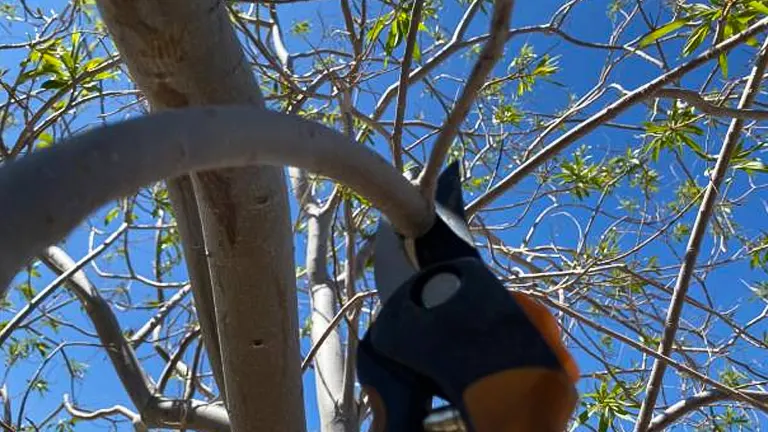
Proper management of planting density and pruning is crucial for optimizing eucalyptus tree health and productivity, especially in medium or high-density farming.
- Plant-to-Plant and Row-to-Row Distances: For medium density plantations, spacing between trees can range from 3 to 5 meters, allowing enough room for each tree to develop without excessive competition for sunlight and nutrients. High-density plantations might reduce spacing to 1.5 to 2.5 meters, aiming for faster growth cycles and early harvests. Row spacing should accommodate equipment used for maintenance and harvesting, typically around 6 to 8 meters.
- Pruning Techniques: Pruning is essential for removing dead or diseased branches, shaping the tree for better light penetration, and encouraging healthy growth. For eucalyptus trees, formative pruning in the first few years helps develop a strong structure. As the trees mature, selective pruning focuses on maintaining health and productivity. It’s important to prune during the dormant season or late winter to minimize stress on the trees.
Soil Management for Eucalyptus Trees
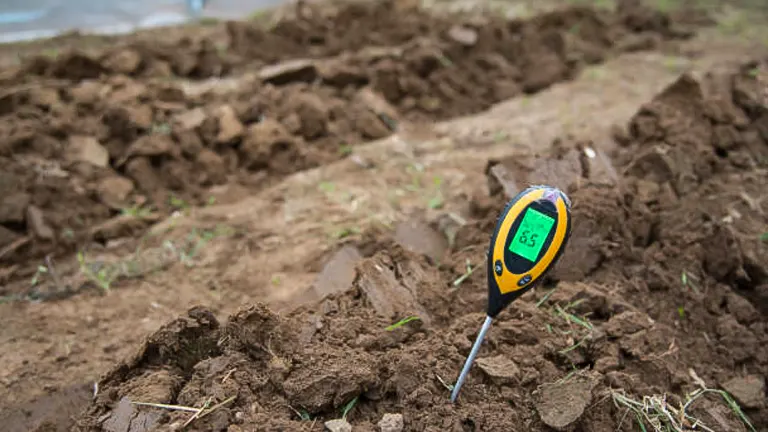
A successful eucalyptus cultivation goes beyond fertilization and includes diligent soil management.
- Soil Testing: Regular soil testing is indispensable for monitoring nutrient levels and soil pH, ensuring that the fertilization regime remains aligned with the trees’ needs. Adjustments to fertilization strategies can then be made based on empirical data rather than guesswork.
- Adjusting Soil pH: Eucalyptus trees prefer slightly acidic to neutral soil pH levels. If soil tests reveal pH levels outside of this range, amendments such as lime (to raise pH) or sulfur (to lower pH) may be necessary. Correcting the pH enhances nutrient availability, directly benefiting tree health and growth.
- Enhancing Soil Structure: Incorporating organic matter into the soil can improve its structure, enhancing water retention, nutrient availability, and root penetration. Mulching around the base of the trees also helps maintain soil moisture and temperature, contributing to healthier root systems.
Monitoring and Adjusting Fertilization Practices
Achieving the best results from fertilizing eucalyptus trees requires ongoing observation and the willingness to adjust practices as needed. This adaptive management approach ensures trees receive optimal nutrition throughout their growth cycles.
- Signs of Over-Fertilization and Under-Fertilization: Vigilance in spotting symptoms of nutrient imbalances is crucial. Over-fertilization often manifests as salt buildup in the soil, leaf burn, or unusually rapid growth that weakens the tree. Under-fertilization, conversely, may result in stunted growth, pale or yellowing leaves, and reduced vigor. Regular soil and leaf tissue tests can help diagnose these issues accurately.
- Adjusting Fertilization Based on Tree Response: The key to successful fertilization lies in interpreting the trees’ responses to applied nutrients. If signs of distress or imbalance appear, it’s necessary to adjust the fertilization strategy promptly. This might mean altering the nutrient composition, application rate, or frequency. Always aim for a balanced approach that meets the trees’ current needs without inducing stress.
- Environmental Considerations: Environmental factors such as drought, excessive rainfall, or temperature extremes can affect nutrient uptake and tree health. During periods of drought, for example, reducing fertilizer application can prevent additional stress on the trees. Conversely, after heavy rainfall, additional fertilization might be necessary to replace leached nutrients.
Common Mistakes to Avoid
Awareness of common fertilization and management mistakes can help prevent costly errors in eucalyptus cultivation.
1. Neglecting Soil Testing
- Mistake: Many growers skip regular soil tests, leading to a misinformed fertilization strategy that can either starve the trees of essential nutrients or lead to nutrient overload.
- Solution: Conduct soil tests at least once every two to three years, more frequently if you notice signs of poor tree health or if you make significant changes to your fertilization practices. Use the results to tailor your fertilization approach, ensuring your trees receive the right balance of nutrients.
2. Over-reliance on Synthetic Fertilizers
- Mistake: While synthetic fertilizers can provide immediate nutrient boosts, excessive use can harm the soil’s microbiome, reduce organic matter, and lead to nutrient runoff and water pollution.
- Solution: Incorporate organic fertilizers and amendments into your fertilization plan to build soil health over time. Organic matter improves soil structure, enhances water retention, and supports a healthy soil microbial community. Consider cover cropping and compost additions as part of a holistic soil health strategy.
3. Improper Pruning
- Mistake: Incorrect or excessive pruning can weaken eucalyptus trees, leaving them vulnerable to pests and diseases. Over-pruning can remove too many leaves, reducing the tree’s ability to photosynthesize and grow.
- Solution: Adhere to best practices for pruning, which involve removing only dead or diseased branches and thinning out dense areas to improve airflow. Prune during the dormant season to minimize stress on the trees. If unsure, consult with a professional arborist.
4. Failing to Adjust for Local Climate Conditions
- Mistake: Not accounting for local climate variations can lead to water stress, either through under-watering in dry regions or over-watering in areas with high rainfall.
- Solution: Customize watering and fertilization schedules based on local weather patterns and seasonal variations. Use drip irrigation or mulching to conserve moisture in arid climates, and ensure adequate drainage in wetter regions to prevent root rot.
5. Ignoring Pest and Disease Management
- Mistake: Neglecting the early signs of pest infestations or disease can quickly lead to significant damage or even loss of trees.
- Solution: Implement regular monitoring for pests and diseases, and adopt integrated pest management (IPM) practices that emphasize prevention, such as maintaining healthy soil, selecting resistant tree varieties, and using biological control agents. Act swiftly to address any issues before they escalate.
6. Overlooking the Importance of Tree Spacing
- Mistake: Planting trees too close together can lead to competition for light, water, and nutrients, adversely affecting growth and increasing susceptibility to diseases.
- Solution: Follow recommended spacing guidelines for your specific eucalyptus variety, taking into account its mature size and growth habits. Proper spacing not only promotes healthier growth but also facilitates air circulation, reducing the risk of disease.
Conclusion
Fertilizing eucalyptus trees effectively for robust growth is a multifaceted endeavor that demands attention to detail, adaptability, and a deep understanding of the trees’ nutritional needs. By following the guidelines outlined in this article, practitioners can enhance the health, productivity, and sustainability of their eucalyptus plantations. Continuous learning, monitoring, and adjustment of fertilization practices will pave the way for successful eucalyptus cultivation, contributing to both ecological and economic benefits.
FAQs
- What is the best time of year to fertilize eucalyptus trees?
The optimal times for fertilizing eucalyptus trees are during their active growth phases, primarily in early spring before new growth starts and again in late summer to support continued development. These periods align with the trees’ natural growth cycles, ensuring nutrients are efficiently utilized. - How do I choose the right fertilizer for my eucalyptus trees?
Select a fertilizer based on a soil test, which will indicate what nutrients are deficient in your soil. Generally, a balanced, slow-release NPK (Nitrogen, Phosphorus, Potassium) fertilizer is recommended. Young trees benefit from higher nitrogen content for leaf and stem growth, while mature trees need a more balanced nutrient mix. - Can over-fertilizing harm my eucalyptus trees?
Yes, over-fertilizing can lead to nutrient burn, where the roots are damaged due to excessive salt concentrations, causing leaf burn, stunted growth, and even death. It’s crucial to follow the recommended dosage and frequency to avoid over-fertilization. - Is it better to use organic or synthetic fertilizers for eucalyptus trees?
Both types have their advantages. Organic fertilizers improve soil health over time and release nutrients slowly, while synthetic fertilizers provide immediate nutrient availability. Your choice should depend on the specific needs of your trees, soil conditions, and personal preferences for organic cultivation practices. - How do I apply fertilizer to eucalyptus trees?
Apply granular fertilizer evenly around the drip line of the tree, the area directly below the outer edges of the canopy, where rainwater tends to drip off. Avoid placing fertilizer too close to the trunk. For liquid fertilizers, spray or pour around the drip line, then water thoroughly to help nutrients penetrate the soil. - How often should I fertilize my eucalyptus trees?
Fertilization frequency depends on the tree’s growth stage, soil fertility, and the type of fertilizer used. Generally, fertilizing once in the early spring and again in late summer is adequate. However, younger trees or those in poor soil may benefit from more frequent, lighter applications. - What signs indicate that my eucalyptus tree needs fertilization?
Indicators include slow growth, pale or yellowing leaves, reduced leaf size, and poor overall vigor. These symptoms suggest a nutrient deficiency that fertilization can address. However, always confirm with a soil test before applying additional nutrients. - Can soil pH affect fertilizer effectiveness for eucalyptus trees?
Absolutely. Eucalyptus trees prefer slightly acidic to neutral pH levels (5.5 to 7.0). If the soil pH is outside this range, nutrients may become less available, hindering absorption. Use a soil test to determine pH and adjust as needed using lime (to raise pH) or sulfur (to lower pH) before fertilizing for optimal nutrient uptake.
Ensuring your eucalyptus trees flourish comes down to timely, thoughtful fertilization. Keep it balanced, stay informed, and watch your eucalyptus grow strong and tall. Happy gardening!

Benjamin Brooks
Forestry AuthorGreetings! I'm Benjamin Brooks, and my journey over the past 15 years has revolved around the fascinating realms of content creation, expertise in snow clearing, and the intricate world of lumberjacking and landscaping. What began as a simple curiosity about the natural world and heavy machinery has evolved into a passionate profession where my love for crafting words intertwines seamlessly with my lumberjacking and garden skills.
2 comments
Plants are good





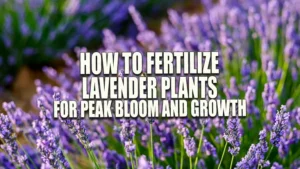







We have Block Plantation 20 Acre in Distt Hoshiar pur Punjab, (Euqliptus Plants ) 8 months old , healthy growth Approx 12 ft Ht. In early Aug, Neutrient Spray of NPK 20:20:20 Plus 500 ml NAINO Urea per 200 Ltr of Water was Sprayed. with Power Spray Pump. After about one week of spray, Plant tree Leaf up to man height started turning light yellow in colour. By early Sep, it is Dark yellow and now by last week of Sep, Yellow leaf have Fallen, At present Plants do have Green Leaf above 7 to 8 feet Ht up to 12 to 14 ft. Rains have now stopped. Watering In Rows have Started. Rotavator Mulching of soiil close to 6" of rows of plants has been done. Request Advise:: 1. Would the Plants Survive and Catch Up Growth by Early Spring say Feb Mar 25. 2. Do we give a small doze of Granual NPK, 12:32;26 now in late Summer i,e Last week of Sep after Waterig. 3. Can I contact you at your convinience. My Whats Up No : 91 94 645 47 096. Thanks Regards Jagdish
Jagdish Singh Bains
September 20, 2024 12:47 pm